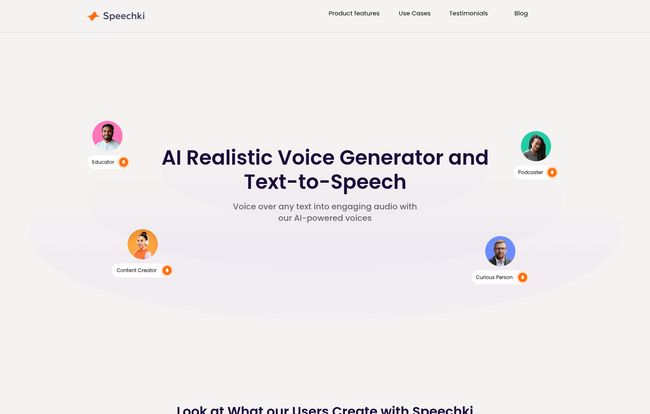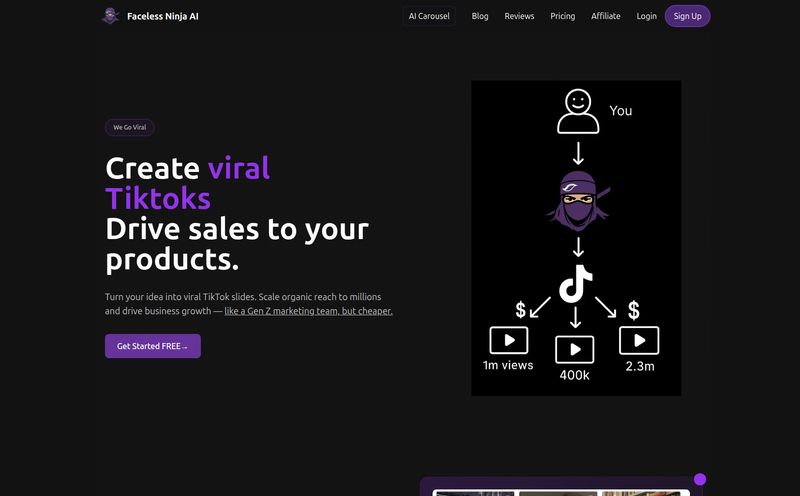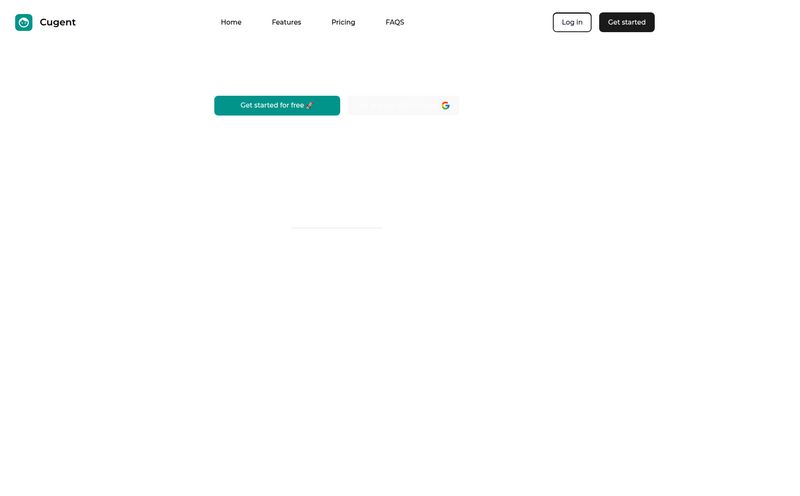I’ve been in this SEO and content game for a long, long time. Long enough to remember when “text-to-speech” meant a robotic, monotone voice that sounded like a bored satnav trying to read Shakespeare. We’ve come a long way, haven’t we? The rise of AI has turned this space on its head, and every week there’s a new tool promising to create audio that’s indistinguishable from a human. A tall order.
So when Speechki landed on my radar, I was intrigued but, as always, a little skeptical. It boasts some seriously big numbers: over a thousand voices, 80-plus languages, and a feature list as long as my arm. But does it deliver? Or is it just another shiny object in the ever-growing pile of AI tools? Let’s get into it.
What Exactly is Speechki Anyway?
At its core, Speechki is an AI-powered text-to-speech (TTS) platform. You give it text, it gives you audio. Simple. But that's like saying a Ferrari is just a way to get from A to B. The difference is in the details. Speechki is aiming to be the go-to solution for creating high-quality, realistic voiceovers for everything from audiobooks and podcasts to corporate training videos and YouTube content.
They’re not just offering a handful of generic voices. We're talking about a massive library of 1,100+ voices across more than 80 languages. That alone is pretty staggering and immediately sets it apart from some of the more basic tools out there. It’s a platform built for creators who need options and global reach.
The Features That Actually Matter
A long feature list can be overwhelming. I’ve seen platforms that brag about a million features, but only two of them are actually useful. I waded through Speechki’s offerings to see what’s fluff and what’s genuinely a big deal for a content creator.
A Library of Voices That Spans the Globe
Okay, let's just sit with this for a second. Over a thousand voices. It’s like having a casting agency on your laptop. This is huge for anyone targeting an international audience. Need a video narrated in Portuguese, then dubbed into Japanese and German? Speechki seems to have you covered. This multilanguage support isn’t just an afterthought; it’s a core part of the product. For businesses looking to scale their content globally, this is a massive plus.
You're the Director: Granular Control Over Speech
Here’s where it gets interesting for control freaks like me. Speechki isn’t just a “press play and pray” system. It gives you tools to direct the AI’s performance. You can control pauses with precision, which is critical for comedic timing or dramatic effect. More importantly, it supports nuanced speech control using things like phonemes and SSML (Speech Synthesis Markup Language).
If you don’t know what SSML is, think of it as a little bit of code that tells the AI voice how to say something. You can adjust the pitch, the rate of speech, and the emphasis on certain words. It’s the difference between a flat reading and a performance with a bit of life in it. It takes some learning, but the power it gives you is immense. You become the conductor of your own AI voice orchestra.

Visit Speechki
Not Just for Solo Acts: Role Management and Chapters
I was pleasantly surprised to see this. Speechki allows for streamlined role management, meaning you can assign different voices to different parts of a script. This is a game-changer for anyone producing audio dramas, interview-style podcasts, or audiobooks with multiple characters. You can also format your audio with chapters, which is a professional touch for longer content, making it easier for listeners to navigate.
The ChatGPT Plugin: A Slick Integration
As someone who practically lives inside ChatGPT for drafting content, this caught my eye. Speechki has a plugin that allows you to generate audio directly from your chat interface. This just removes friction from the creative process. You can draft a script, get feedback, and generate the audio all in one place without constantly switching tabs. It's a smart move that shows they understand modern content workflows.
Who is Speechki Built For? My Take.
Based on its feature set, Speechki isn't really for the casual user who just wants to turn a paragraph into audio once a month. This is a more serious tool for:
- Content Creators: YouTubers, course creators, and bloggers who want to repurpose their written content into audio formats like videos or audio articles.
- Authors: This seems like a fantastic tool for indie authors who want to dip their toes into the audiobook market without the massive expense of hiring a studio and voice actor.
- Podcasters: Great for creating professional-sounding intros, outros, ad reads, or even entire narrative-style shows with multiple AI “actors.”
- Educators and Businesses: Perfect for developing e-learning modules, training materials, and corporate presentations for a global workforce.
The Good, The Bad, and The AI
No tool is perfect. Let's get real about what works and what gives me pause.
On the plus side, the sheer variety of voices and languages is top-tier. The customization options are deep and powerful if you’re willing to learn them. And the integrations, especially the API and ChatGPT plugin, are incredibly practical. The visual editor also looks clean and easy to navigate, which lowers the barrier to entry.
However, there are a couple of things that feel...off. The first is teh reliance on AI. Now, that sounds silly for an AI tool, but hear me out. Even the best AI voices can sometimes miss the mark on tone or pronunciation for very specific or technical words. You should go into this expecting to do some fine-tuning and proof-listening. It’s not magic. It’s a tool that still requires a skilled operator.
The second, and much bigger issue, is the pricing.
So, What’s the Price? The Big Question Mark.
I went looking for the pricing page. It’s standard practice for any blogger reviewing a SaaS tool. And... I was met with a 404 error. Page not found. This is a bit of a red flag for me. In my experience, when pricing isn't transparent, it usually means it’s either enterprise-level (read: expensive) or they want to get you on a sales call. For a small creator or solopreneur, that lack of clarity can be a major hurdle. I can’t tell you if it’s a good value because I have no idea what it costs. It’s a strange choice for a company that seems to be targeting the creator economy.
My Final Verdict: Is Speechki Worth Your Time?
Speechki feels like a powerhouse tool with a slightly mysterious aura. The technology and features on display are genuinely impressive. The multilingual support and deep customization options put it in a professional tier, far above basic TTS apps.
If you are a serious content creator, a publisher, or a business with a real need for high-volume, multi-language audio, then I think Speechki is absolutely worth investigating. The ability to create entire audiobooks or manage multiple voice roles is a professional-grade feature.
But that mystery around the pricing is a problem. My advice? If the features I’ve described sound like exactly what you need, reach out to them for a demo or a quote. But if you’re a smaller creator just looking for a simple, affordable text-to-speech solution, the lack of transparency might be enough to have you looking elsewhere. It’s a fantastic-looking car, but I can’t tell you if you can afford it.
Frequently Asked Questions about Speechki
- What is Speechki in simple terms?
- Speechki is an advanced online tool that uses artificial intelligence to turn written text into very realistic-sounding audio. It offers a massive library of over 1,100 voices in 80+ languages.
- How many voices and languages does Speechki offer?
- It provides a huge selection of over 1,100 realistic AI voices and supports more than 80 different languages and dialects, making it ideal for creating content for a global audience.
- Can I control the emotion and pacing of the AI voice?
- Yes, you can. Speechki offers advanced controls, including SSML support, which allows you to adjust the speed, pitch, volume, and even the pronunciation of words to give the voice a more natural, human-like performance.
- Is Speechki good for beginners?
- It has a user-friendly interface that should be approachable for beginners. However, to get the absolute best results, you'll want to learn some of its more advanced features like SSML, which might have a slight learning curve.
- Does Speechki have a free trial?
- The website doesn't make this immediately clear, which is tied to the general lack of pricing information. Your best bet is to visit their site and see if they offer a demo or a trial signup option.
- What does the Speechki ChatGPT plugin do?
- It's a handy integration that lets you generate audio with Speechki's voices directly within the ChatGPT interface. This helps streamline the content creation process, as you can write, edit, and generate audio from one place.
The Last Word
The world of AI voice generation is evolving at a breakneck pace. Tools like Speechki are pushing the boundaries of what’s possible, closing the gap between artificial and human narration. It’s an exciting time! Speechki is undeniably a powerful and feature-rich contender. I just wish they’d tell us how much it costs.
Reference and Sources
- Speechki Official Website: https://www.speechki.com
- W3C, Speech Synthesis Markup Language (SSML) Version 1.1: https://www.w3.org/TR/speech-synthesis/



